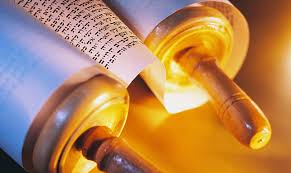9 Adar ll 5782
Leviticus 1: 1 – 5:26
The Book of Vayikra (Leviticus), which we are beginning this week, is also called Torat HaKohanim, instructions for the Priests. It mostly deals with the Korbanot (the offerings) to be presented in the Mishkan (Tabernacle). Vayikra is a book that from the very beginning, from the first parashah, calls us to examine the quality of our relationship with our Creator, through the relationship that we have with our environment and especially with our neighbor.
Our parashah this week describes the various offerings to be presented at the altar. The first set were the burnt offerings (called ola). An animal was brought to the entrance of the Mishkan. If it was cattle, the person bringing this offering would place his hands upon the animal that was being offered up, and the Cohen would sprinkle some of the blood of the dead animal upon the altar. He then skinned it, cut it into pieces, arranged the parts which were washed, in a specific way, and then it was burned on the altar. The process for the burnt offerings of other animals and birds was described along with the various vegetable or grain offerings (called Mincha), part of which was burned upon the altar, and the rest was eaten by the Cohanim. The peace offerings (shelamim), part of which were burned on the altar, and the rest eaten, could have been from cattle, sheep, or goats. The expiatory sacrifices (Chataat) are detailed; these cover the sins committed by error, by the Cohen HaGadol or by the entire community, or by the prince, or by any common citizen. The guilt offerings (Asham) were listed; they served to atone (cover) for certain verbal transgressions and sins related to the laws of ritual purity. Grain offerings were brought by those who couldn’t afford the required guilt offering to cover for the misappropriation of sacred property, the laws for “questionable fault” and the offerings for the sins of dishonesty and cheating.
The Hebrew word Korban, which we find in the Torah to describe animal offerings, does not simply mean sacrifice, in the sense of giving up something, nor does it mean an offering in the simple sense of bringing gifts. Instead, korban (from the root kerev) means “to draw near or to approach.” That means it serves to help a person get closer to God.
The Book of Vayikra is rich in details on the instructions especially regulating the sacrifices and the behavior of the priests; but how are we to understand these sacrifices for us today? Some want to justify the sacrifices saying that we have the need or desire to show our gratitude to God for the gifts of life and sustenance in the sense that we owe something to the Creator for having created us and that we can pay Him back; that it allows us to better deal with our feelings of guilt for our mistakes and thus to make amends for them. This is more like the pagan idea of appeasing the gods.
Our prophet Isaiah says: “What use is the multitude of your sacrifices to me? says Adonai. I am fed up with burnt offerings of rams, and with the fat of animals; I do not want the blood of oxen, or sheep, or goats” (1:11).
Today there are no such rituals. The Temple of Jerusalem, where the offerings were brought, no longer exists; the service to God from the sacrifice of animals is no longer the language with which the people can communicate with the divine… So, what does this have to do with us today?
In the Temple, the parts of the animal were taken and “raised” up upon the altar. This is a personal statement, an attempt to raise our material resources to a higher level – to direct them to the service of God. It is obvious that the offerings are not for God. He doesn’t need them. God is almighty, and he is the Owner and LORD of everything. Instead, the offerings are for us. We are being taught to take the physical and to sanctify it.
Our Hebrew sage Maimonides taught: “our actions are composed of three elements: thought, speech and action”. This is depicted in Leviticus (Vayikra) 1:9 where God commands us to bring an offering and to lay our hands on its head (corresponding to our “action”); we must also confess our transgressions out loud (this corresponds to our “speech”); and later we burn the various parts of the animal on the altar, those internal organs where thoughts and desires are generated (corresponding to our “thought”). The blood, the soul of the animal, was sprinkled upon the altar depicting how the offerings symbolize our dedication, “body and soul” to the Creator. It is we who must offer ourselves to God to be His servants in this world.
The first word of this book Vayikra/Leviticus is “Vayikra” (“And he called…”). In the Torah, the last letter of this word is written with a small a, an alef in Hebrew. The alef is the letter that symbolizes the will, the ego. It is the first letter of the Hebrew word meaning “I” – Ani. When the individual makes himself small, like the small aleph, he creates a place for the Divine Presence to rest within him. He does not have a head swelled with illusions of grandeur.
Last week we studied the cloud that covered the tabernacle and this week we see the “calling”. Again, the Borah Olam is teaching us about doing Teshuvah. After the cloud which represents concealment, being hidden, we receive the call (His revelation) and that is when we can approach our Creator by doing Teshuvah, returning to Him.
May the Eternal allow us to approach Him daily with a willing heart so that we can enjoy His Presence in our lives every single day.
SHABBAT SHALOM!
Alejandro Alvarado
